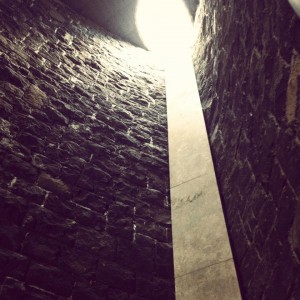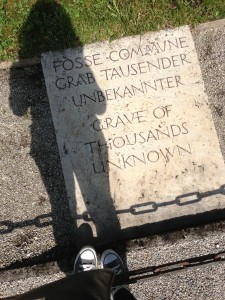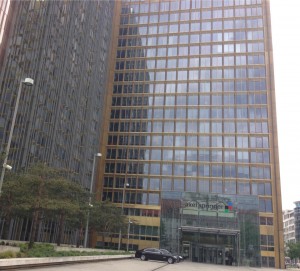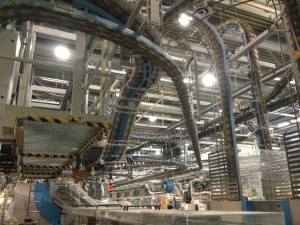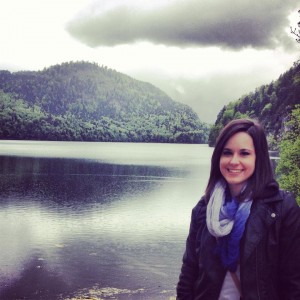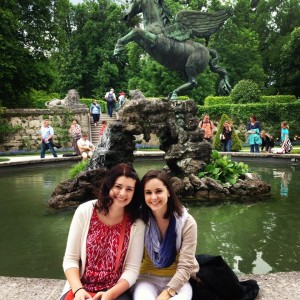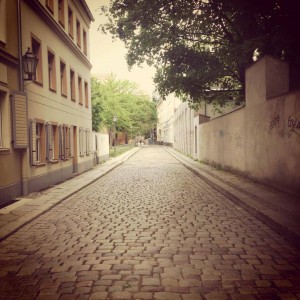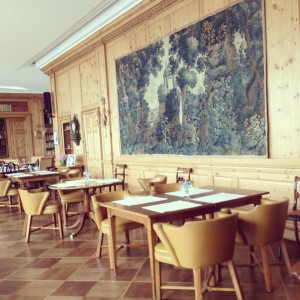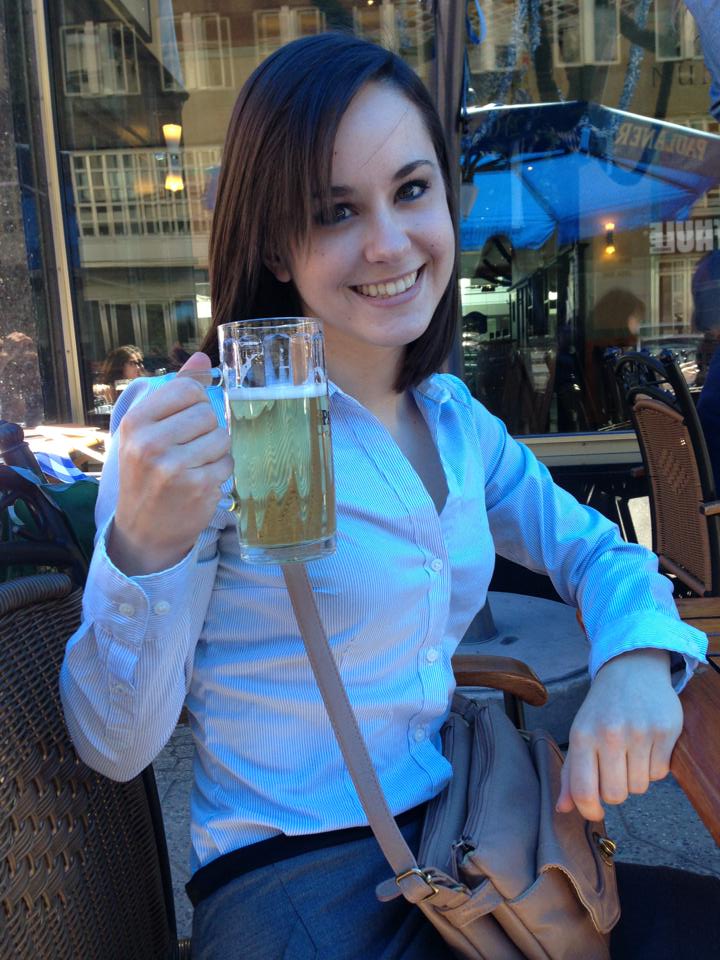by Marina Weis
The deceptive words, arbeit macht frei, or, labor makes you free, welcomed thousands of prisoners as they made their way through the entryway into the Dachau concentration camp in Germany.
Now weeds grow over the rusted barbed wire that surrounds a large courtyard plagued with an eerie emptiness. Songbirds pierce the silence as small groups of visitors pause to read at information stands about the atrocities that happened here years ago when thousands of people were tortured and killed for the Nazi regime.
“We are walking on the ashes of the people who died here,” said Arnoud Beck, a tour guide for Explorica who was leading the Point Park group of visitors through the camp as part of the International Media class.
“Can we take photos?” asked a student visitor.
“No,” Beck answered. The tourists frowned. “You have to take pictures to show the world so it never happens again.”
Out of many concentration camps in Germany, this was the first set up by the Nazi regime and acted as an example to the rest that followed. It opened in 1933 as a camp for political prisoners – all those who opposed Hitler, such as communists, social democrats and especially the Jews. But in 1938 it became a concentration camp. Originally designed to hold 6,000 prisoners, the Americans who liberated the camp found it overfilled with 32,000.
Although the Americans liberated the camp in 1945, it was still used as a place for immigrants and homeless people. It was only after riots that the camp was closed around 1965. Soon after, the Bavarian government decided to make it an open-air memorial, and it includes three religious installments – Catholic, Jewish and Protestant. Some of the outdoor sculpture depicts those prisoners who ended their lives by running into the electrified barbed wire to end their suffering or attempting to escape by whatever possible means only to be shot by guards atop one of the towers surrounding the perimeter of the concentration camp. The camp now receives more than 1 million annual visitors.
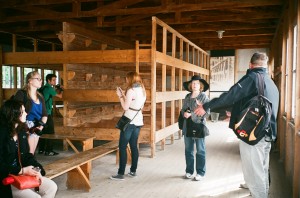
Munich tour guide Arnoud Beck explains how the Dachau prisoners were crammed into the barrack’s sleeping quarters.
(photo by Helen Fallon)
All 30 of the original barracks, which each housed more than 2,000 prisoners, were destroyed, but two exact copies were re-created for the memorial. But the gas chamber and crematorium are more or less original, according to Beck.
A native of Holland, Beck said he know many families who lost their relatives in the Holocaust. The first time he visited the camp was 20 years ago, but even after so many years, the terror still resonates with him.
“I’ve been here 100 times, and I’m still getting emotional,” Beck said. “If I go 100 times into wherever – who cares? But if I go into a camp, I still get emotional. It’s unbelievable.”
For Beck, one of the most depressing aspects about the camp is looking at the photos of prisoners who suffered from the medical experiments they were forced to participate in by the Nazis.
One photo array in the visitor center shows a man used as a subject for an aeronautic experiment for research into the possibility of survival at great altitudes. Three photos show him in a high-pressure room, and his facial expressions become progressively pained. Eventually, his brain could not take the pressure, and he died.
Others were subject to being injected with malaria and put in ice-cold water to test equipment, among other tests.
The prisoners who were traveling on a train for a week or two had hardly any food or water, so the Nazis felt they needed to be disinfected. Visitors can walk through the disinfection room that connects to the gas chamber and then eventually the crematorium. The heavy chemicals emitted from the pipes in the narrow, dark disinfection room sometimes killed the prisoners as well.
Dim light cast long, eerie shadows of visitors in the low ceiling room with small, barred windows near the floor of the gas chamber.
“This was the center for potential mass murder,” Beck said. “The room was disguised as showers and equipped with fake shower spouts to mislead the victims and prevent them from refusing to enter the room.”
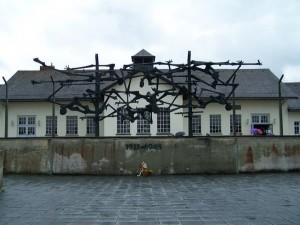
An artistic memorial depicting intertwined bones and bodies adorns the exterior of the Dachau Concentration Camp museum.
(photo by Sara Tallerico)
The prisoners who were not deemed fit were transported to Auschwitz’s gas chambers in many cases instead of this gas chamber here at Dachau because the camp did not have enough fuel to burn the bodies, according to Beck. They had to get rid of the evidence. But some prisoners were forced to strip naked and enter the gas chamber. Death by poison gas could take up to 20 minutes.
The crematorium was erected to serve as both a killing facility and to remove the dead. Following the crematorium is a room with stained walls used to store corpses brought from the camp to be cremated.
Prisoners at the camp faced at 13-hour workday, seven days a week. The barracks had to be kept in pristine condition. If coffee were spilled on the floor, the entire barrack would be punished, Beck said.
Originally, each barrack was meant to 200 prisoners, but as the war waged on, they housed more than 2,000 with no insulation and no heater. Privacy did not exist, as there was one big toilet area and one washing room with two basins for the entire barrack.
Some of the beds, made up of wooden planks, have separators for privacy, but in other rooms, there are no separators. But this was an advantage in the winter as body heat helped to warm the prisoners.
But most people died because of sickness above anything else, according to Beck and the center’s website. At the end of 1944, the number of prisoners staggered over 60,000 and the living conditions were catastrophic due to poor hygiene and food supplies. An epidemic of typhus claimed over 15,000 lives. A serious case of tuberculosis was also discovered in block no. 29, and people were murdered in groups of 20 by injection.
Finally the camp was liberated in April of 1945. But the Americans could not believe what they found. A few trucks containing prisoners were never opened because they soldiers forgot, and more than 200 prisoners died.
Many prisoners, who ate the chocolate the soldiers brought, died as they did not have any solid food for a long time. Some others, desperate for new clothing, went to the now-abandoned SS barracks. They donned some of the guards’ clothing, and the Americans, suspicious of them, kept them imprisoned. Some, according to a memoir published by a South Tyrol conscientious objector, were sent to a French prisoner of war camp for months after the camp’s liberation.
Others could not leave the camp immediately because they had to go through decontamination due to illness. It took some nine to 10 months before they could leave, as many were also too weak to enter society.
At the end of the visitor center, there is a display explaining what happened to the war criminals involved in national socialist crimes at Dachau. The trials by the Allies were the first of their kind and became models for following trials, but with the beginning of the Cold War, interest in prosecution began to recede. The West German justice system took over, and despite preliminary trials, there were an overwhelming number to deal with and then only a few prosecutions. Most offenses were placed under amnesty and therefore many of the crimes committed remained unpunished.
“You have people that don’t know about the massive executions. You have to think about 26 million people were killed in five years,” Beck said to his group of visitors, cameras peppered among them as he ended the tour. “I hope when you show those pictures to other people, I hope that they got that same effect and start thinking about what they are doing.”
